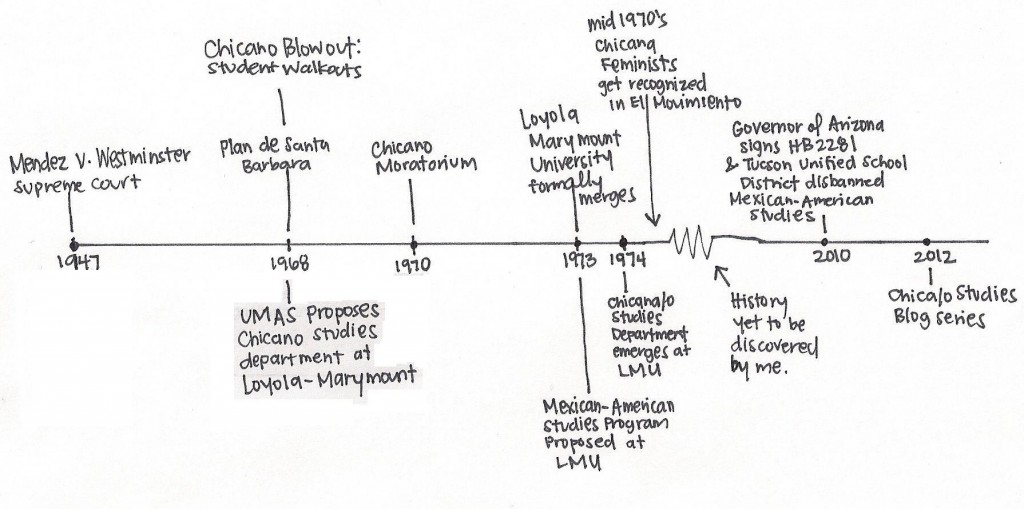This is part of a longer blog series, which you can find links to the previous as well as the next blog posts at the bottom of this blog.
I think its time I put some things into perspective and piece some of the history and blogs together.
I have complied a time line with the perspectives of the blogs but also some big events of the Chicano History.
1947: Mendez v. Westminster Supreme Court: This case is critical to the birth of the Chicana/o Studies program because it is the case that desegregated schools for Mexican and Mexican American students in Orange County California School.
1968:Chicano Blowouts: Stepping stone towards establishing a formal conversation around the development and implementation of the programs as students walked out in response to the lack of an inclusive curriculum and discrimination they felt in their classrooms.
Plan de Santa Barbara: Noted as the manifesto for implementing Chicano Studies educational programs.
United Mexican-American Students (UMAS) of Loyola-Marymount Proposes a Chicano Studies Department: In a pretty hefty document the students of UMAS began to demand a Chicano Studies Department at LMU.
1970:Chicano Moratorium: An anti-Vietnam war protest that united the Chicanos under one cause, yet it went terribly wrong.
1973: Loyola Marymount University(LMU) officially merge and changes its name to what we know it as currently.
Mexican-American Studies Program proposed at LMU: Five years after UMAS proposes an immediate implementation of a Chicano Studies Program, a proposal for a Mexican-American Studies program emerges.
1974: Chicana/o Studies Department is finally borned at LMU.
Mid 1970’s:Chicana feminist get recognized in El Movimiento thus allowing the discourse of our Chicana Feminism class to occur.
2010: Governor of Arizona signs HB2281 and Tucson Unified School District disbanded Mexican American Studies.
2012: LMU’s Centennial Celebration!
The start of my Chicana/o Studies blog series.
So although this is the end of the series, it is time to recognize this would not have been possible without the help and support of Dr. Annemarie Perez, Dr. Karen Mary Davalos, Raymundo Andrade, Mahnaz Ghaznavi, and Christine Megowan and all those who laid the foundation of the department that gave birth to my interest to its history. Gracias!
Read more:
The Birth of the Chicana/o Studies Department, Setting the Stage, Students Propose a New Program, From Chicano Studies Department to Mexican- American Studies Degree Program, Capstone Project Gone Blog

